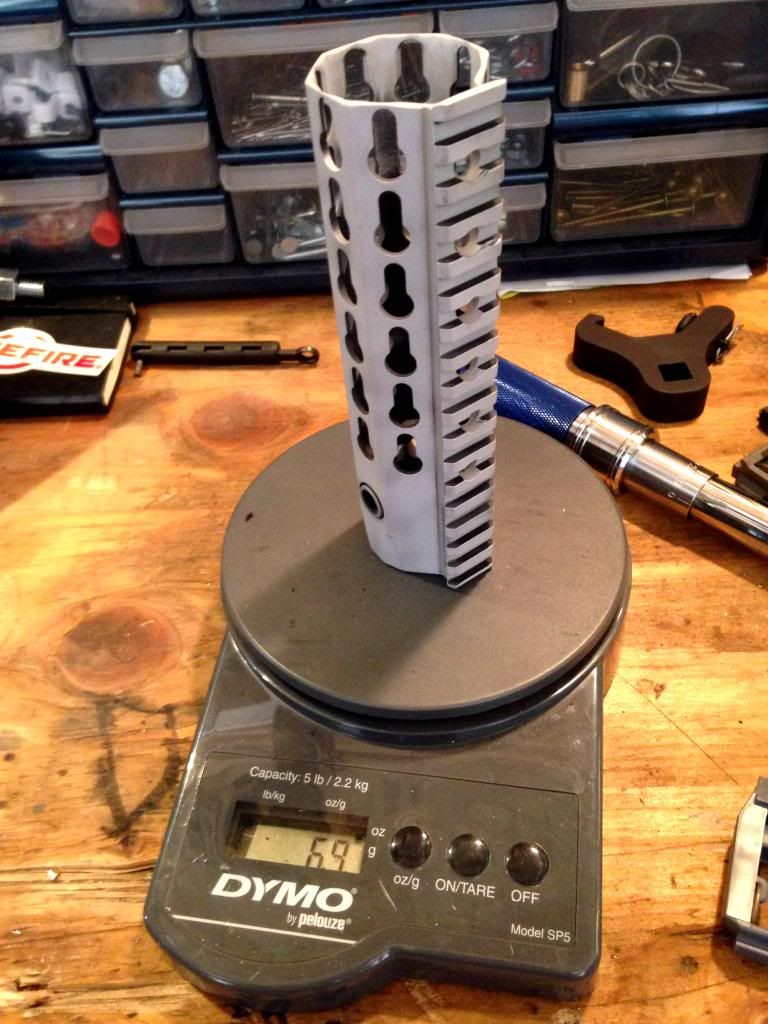Join the Hide community
Get access to live stream, lessons, the post exchange, and chat with other snipers.
Register
Download Gravity Ballistics
Get help to accurately calculate and scope your sniper rifle using real shooting data.

Install the app
How to install the app on iOS
Follow along with the video below to see how to install our site as a web app on your home screen.
Note: This feature may not be available in some browsers.
You are using an out of date browser. It may not display this or other websites correctly.
You should upgrade or use an alternative browser.
You should upgrade or use an alternative browser.
Cerakote durability over anodized / factory finish lowers?
- Thread starter thefitter
- Start date
No comparison. As a Cerakoter I can tell how good each manufacturers anodizing is by how hard or easy it is to blast off. You would be surprised at some! Cerakote must be applied correctly or it is no better than the others. But when done correctly there is no substitute. I say this having tried Duracoat, KG Guncote, Alumahyde and Norrells Moly Resin. norrels is the second best IMHO.
Cerakote holds up excellent on slides. I think plastic holsters are pretty abusive on a finish. Doubt you'll ever wear it out on a AR.
I never completely remove anodizing, there is no need to. Completely removing the anodizing from your upper and lower will leave you with out of spec receivers. I know this because I have made the mistake.
Cerakote holds up great but it will wear and scratch.

Cerakote holds up great but it will wear and scratch.

I've done about 30 rifles now, and I've had no such issue. The finish is far better when parts are fully prepped per Cerakote's guidance. In this case, I tend to agree with the advice coming from the MFGer of the product being used. Maybe a certified applicator that has gone through the official certification process can confirm...
I feel like I have read that Cerakote sticks really nice to mil-spec anodizing (not the crap with Teflon). FWIW, I have a Cerakoted AR and it's holding up nicely, but I don't know how it was prepped.
Cerakote works as well as it does because it is extremely thin (.001") but it needs to have the necessary recess in the material being coated to turnout like it should. Some anodizing is extremely light (Cerakote suggests blasting for 3-5 seconds to determine sufficient cut depth left by blasting media). I've tried 120, 100 and 80 grit aluminum oxide. 100 grit is perfect if you have a tight control over the amount of paint being applied to any given part. I've found that 80 grit allows for a slightly thicker .003" margin of error with respect to the coating thickness. If you're applying Cerakote over anodizing without blasting your paint job might look great in the safe but will deteriorate much faster and to a higher degree compared to those that have been prepped appropriately. There's a little bit of art to the science of a good Cerakote job. IMO it's a pretty time consuming, tedious task for the occasional job considering the equipment needed to efficiently complete jobs. Beleive me, I've skipped many of the steps associated with what Cerakote recommends throughout the prep process, but after handling something that has been properly prepped I've recoated everything that I thought was "good enough." It's that big of a difference. No one is changing dimensions of machined parts by blasting or even applying paint. If your take down/pivot pins are harder to set and remove because you've applied paint over heavy adonization or too thick of a coat then just sand it down and carry on.
A few examples. Look (and more importantly, FEEL) like they came from the factory that way. The point being that there really is no substitute for proper prep work...
Frame: Combat Grey; Slide: Stone Grey; Suppressor: Cobalt

Frame: Chocolate Brown; Everything else: Magpul FDE
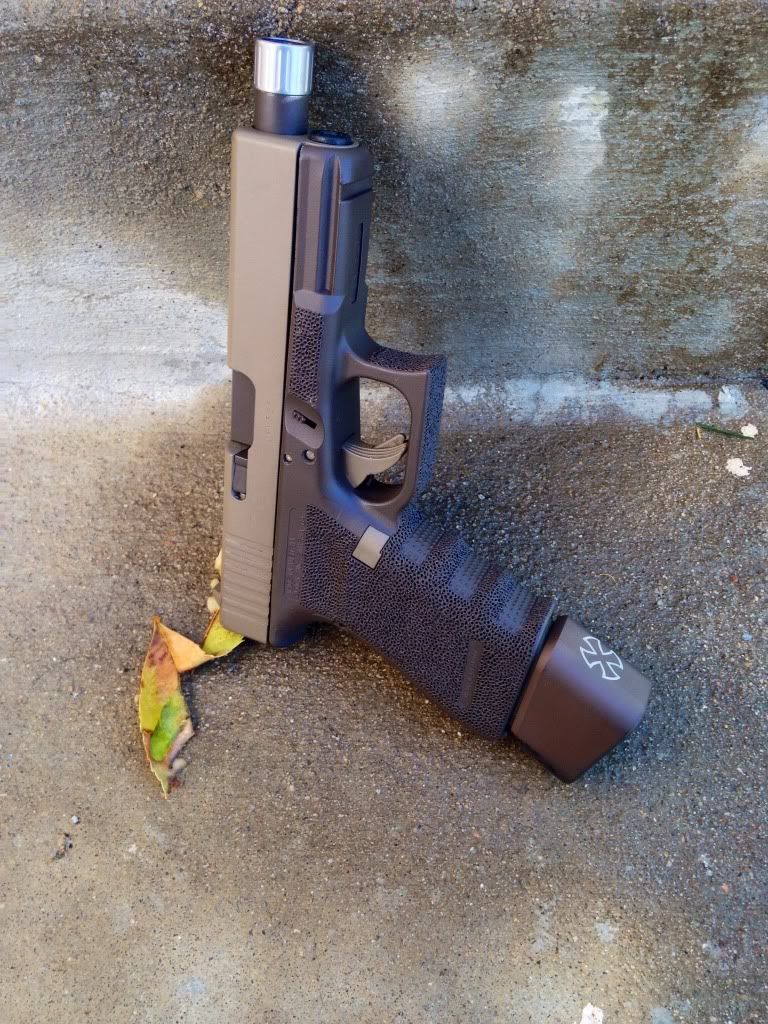
Same KAC URX 4 as the one pictured in previous post that had anodizing completely removed:
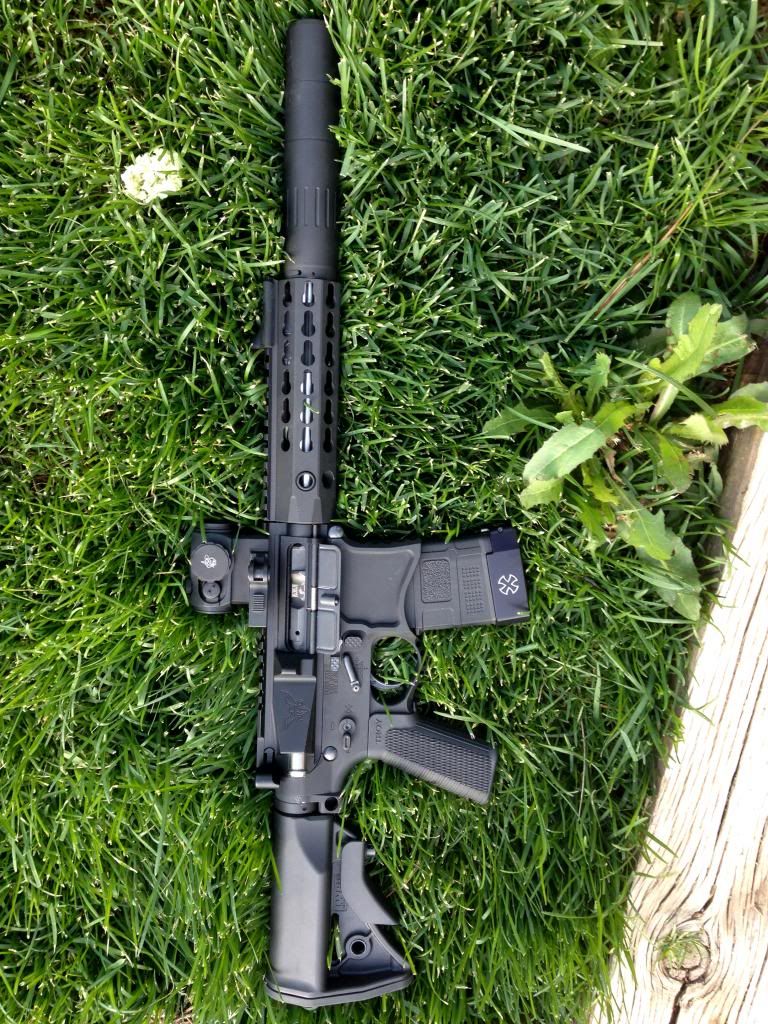
Straight Magpul OD Green (buffer tube and grip are highland green):
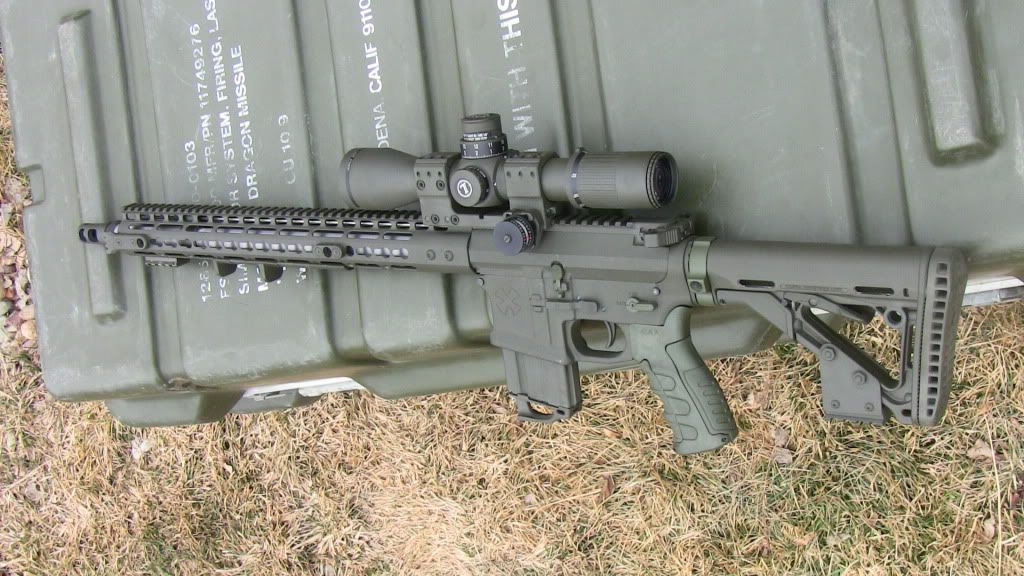
Straight Magpul FDE:

Magpul OD Green, Cross Canyon Arms Green & Black:
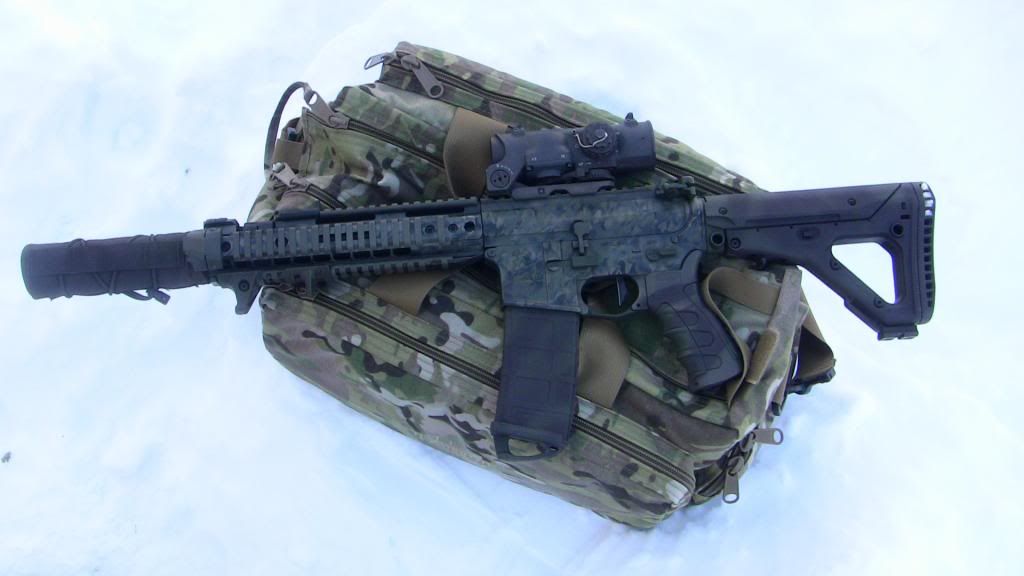
Mil-Spec OD Green, Foliage Green, Sniper Green & Patriot Brown:
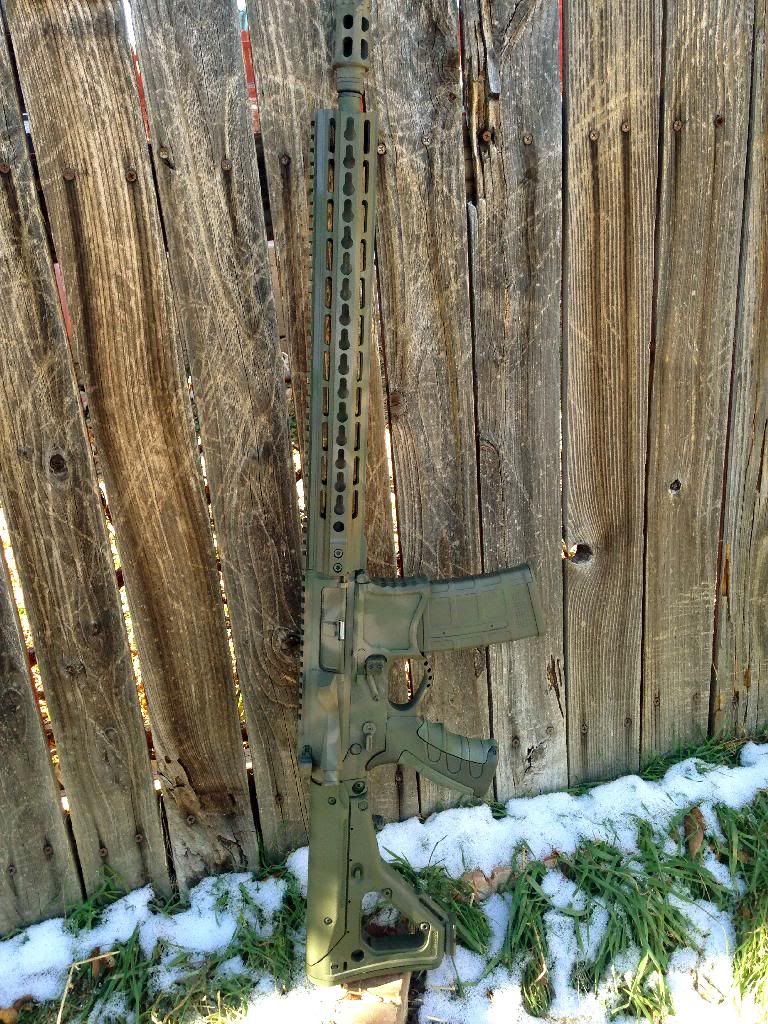
Patriot Brown, Chocolate Brown & Magpul FDE:
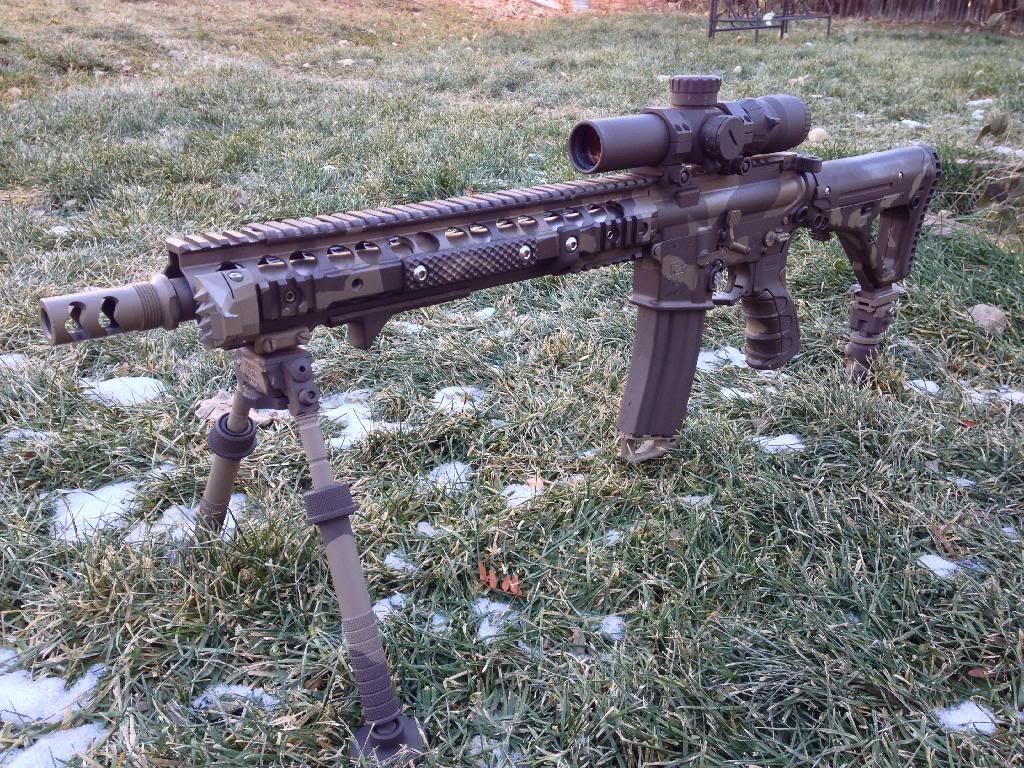
Ranger Green, Magpul OD Green & Bright White:

OD Green on barrel, rail, receiver and bipod:
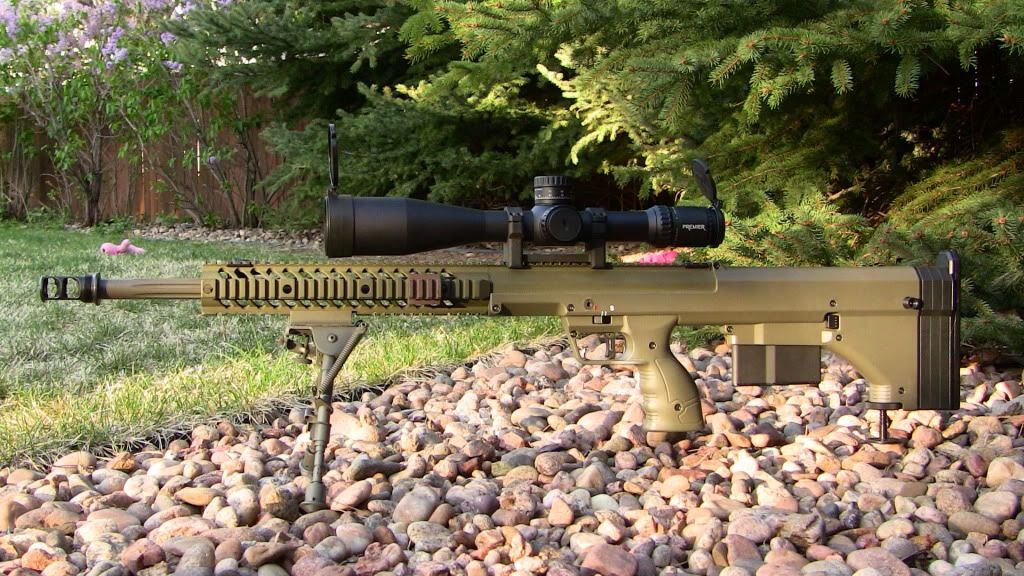
Frame: Combat Grey; Slide: Stone Grey; Suppressor: Cobalt

Frame: Chocolate Brown; Everything else: Magpul FDE

Same KAC URX 4 as the one pictured in previous post that had anodizing completely removed:

Straight Magpul OD Green (buffer tube and grip are highland green):

Straight Magpul FDE:

Magpul OD Green, Cross Canyon Arms Green & Black:

Mil-Spec OD Green, Foliage Green, Sniper Green & Patriot Brown:

Patriot Brown, Chocolate Brown & Magpul FDE:

Ranger Green, Magpul OD Green & Bright White:

OD Green on barrel, rail, receiver and bipod:

Removing all anodizing is a bad idea, IMO. Lightly blast with 120 AO. Yes, some anodizing needs more blasting than others but it does not need to be completely removed.
So how are you spraying .001 inside the URX4 rail you have posted?
I've listened to a good bit of the manufacturers(NIC/Cerakote) advice only to find they are wrong at times.
So how are you spraying .001 inside the URX4 rail you have posted?
I've listened to a good bit of the manufacturers(NIC/Cerakote) advice only to find they are wrong at times.
Removing all anodizing is a bad idea, IMO. Lightly blast with 120 AO. Yes, some anodizing needs more blasting than others but it does not need to be completely removed.
So how are you spraying .001 inside the URX4 rail you have posted?
I've listened to a good bit of the manufacturers(NIC/Cerakote) advice only to find they are wrong at times.
I agree with your advice comment - I use 80 grit AO for example rather than 100-120 grit. Generally speaking, however, I do feel it's advantageous to take into account insight provided by those who've created a product.
I should have used a different word than "completely" above the URX pic. It was probably closer to 85%-90% removed. Even then, what specifically makes you feel that removing anodizing is a bad idea? Aluminum is already oxidized when it makes contact with the air. It's not going to rust and you're just replacing a raised surface with one of a different color. That's really it. Let's say you're doing a multi-color camo or Kryptek job and youre overlapping colors. It's pretty difficult to keep applied paint layers to a uniform .001" when put in that context. If you're putting more paint on you'll more than likely need more margin of error to ensure it turns out like you want it (this & time spent blasting is why I use 80 grit).
With Cerakote, the goal should be uniformity around cut depth and shade - not how much anodizing is left. You want to end up with coated parts that are as close to the exact size they were before hand. If that means your anodizing comes off, then it was a weak HA job anyway and you're no worse off. If you're coating over an HA'd part with the only prep being degreasing then your finished product will have a surface that's raised more than it should be leading to multiple sizing/fit issues. One might think its awesome until you get your hands on one that was prepped appropriately. Cerakote on top of HA is not the "best of both worlds" it's just two of the same on top of each other.
Cerakote essentially does the same thing HA does, it's simply applied differently, adheres differently and can vary in color and uniformity. They both increase surface hardness, protect against abrasion & corrosion, increase impact resistance, etc. The only real difference is the way they bond to the aluminum and the flexibility of each. That's about it with aluminum. Steel is a completely different story.
Sawman, to answer your question, the .001" aspect isn't as relevant when it's the inside of the handguard considering the minute variation in size wouldn't affect anything in that particular spot. Uniformity was the goal. I cut down the handguard and milled holes through the cross slots to reduce weight. Instead of just touching up the edges around those areas I refinished the entire handguard to ensure it had the same color and durability throughout. Used the same HVLP as I did on everything else...
Similar threads
- Replies
- 1
- Views
- 209
- Replies
- 2
- Views
- 491
